Three crushed elephants of Ukraine
Likewise, the army of Ukraine, clearly believed that their three elephants would allow the world to stand firmly and firmly. Moreover, it all started long before February 24th. To be honest, the conversations began in November 2021, and in these conversations the same refrain sounded: the Russian army will be defeated, because the Armed Forces of Ukraine have: Javelin, Stinger and Bayraktar.
However, the first month of the special operation on the territory of Ukraine showed that many things turned out to be too optimistic.
Yes, the Ukrainian army has confirmed that it is indeed the most combat-ready army in Europe. Without exaggeration. Half a million people who have gone through baptism of fire in the Donbass during the eight years of the civil war are no joke. These are people who know and know how to survive and fight, who have been under mines and bullets. And if we add on Nazism, which took root and bore fruit in the form of, if not a high fighting spirit, then a substitute for it, moral obstinacy, then in fact everything is pretty decent.
Of course, in terms of technical equipment of the Armed Forces of Ukraine - they are still rogue, although, of course, they look cooler than, say, the same Romania or Bulgaria, but for the most part they are also armed with the remnants of the Soviet heritage. Of course, the heritage is being modernized, but at such a pace that it's just sad to look at it.
Of course, when all the military industry is capable of is the production of five tanks new generation, and many upgrades come down to reinstalling Soviet weapons on the Ukrainian chassis from KrAZ, it is clear that the same Javelin looks like some kind of “miracleweapon».
And now we’ll talk about this “miracle weapon”.
In fact, the conversation is not very interesting. A lot of reasonable people, including those on our pages, spoke out in terms of the fact that Javelins, Stingers and Bayraktars would not be able to solve problems from the word “absolutely”. Why can't they?
And because you need to look at the complex.
Let's start with the main disappointment.
"Bayraktar"

It seems that the “Zen” of this device has become clear. This is his price. It was the low cost that made "Bayraktar" the "hit of the season". From 2,5 to 5 million dollars apiece, and the Turks will sell a set of two control stations, six TV2 devices and two hundred ammunition in bulk for only 70 million dollars.
Available even to such poor armies, which is the Armed Forces of Ukraine.
Ammunition is also very budgetary: adjustable glide bombs with a laser guidance system MAM-L and MAM-C. In fact, these bombs are L-UMTAS ATGMs, which have had their rocket engine removed and the tail area increased for better planning, leaving the guidance system. Very cheap and cheerful if you get it right. And you can get there in the same way as controlling an ATGM, that is, by illuminating the target with a laser. Illumination can be carried out by Bayraktar itself, and by some other device.
MAM-L is equipped with a tandem or thermobaric warhead weighing up to 10 kg, MAM-C is equipped with a high-explosive fragmentation warhead weighing 2,5 kg. The planning range of ammunition is about 8 km, and the accuracy is up to 1 meter.
You can also hang two UMTAS ATGMs, but this is no longer a budget solution.
As a result, it turns out that TV2 is a very cheap high-precision weapon. Possessing advantages and disadvantages, but for a cheap local war it’s better not to come up with. The advantages, in addition to the price, include the initial good and diverse set of weapons. In addition, the very design of the “Bayraktar” of the “Do it yourself” type really allows you to assemble it anywhere using various components.
More disadvantages. And here we will talk about them in more detail, because they outweigh the advantages.
1. UAV, whatever one may say, but this is not a plane. Yes, it has its own reconnaissance and strike niche in a modern military conflict, it is quite suitable for certain types of applications, but this is not an aircraft. The operator cannot control the surrounding area through the camera as effectively as the pilot with his radar. Hence the vulnerability, especially since the radar radiation sensors at the Bayraktar, as shown by the special operation in Ukraine, work so-so. And often, the UAV, which was already in the zone of operation of the air defense system, walked as if nothing had happened. To your final.
2. The range of the UAV is limited by the communication range. The radio channel allows you to control Bayraktar at a distance of up to 150 km, in addition, the radio channel can be paralyzed by modern electronic warfare equipment. Can be used drones- repeaters, but this does not improve the operation of the system as a whole, but rather complicates it. This is exactly what the Azerbaijani army did, starting to use heavy Israeli-made UAVs to transmit data to the control center via satellite. But for the Armed Forces of Ukraine it is not an option, since Ukraine does not have any repeaters or satellites.
3. Guidance of ammunition. The low working ceiling of 5 km is reduced by half due to the operation of the guidance laser. The operating range of the Bairaktara LCC is no more than 3,5 km, which means that in order to illuminate the target, it is necessary to decrease to 2-2,5 km. That is, the UAV easily finds itself in the working area of the Pantsir-S1 and Tunguska guns. We don’t even talk about missiles, here a queue of people is lining up, the main of which is Tor-M2, which shot down, shoots down and will shoot down Bayraktars easily and simply.
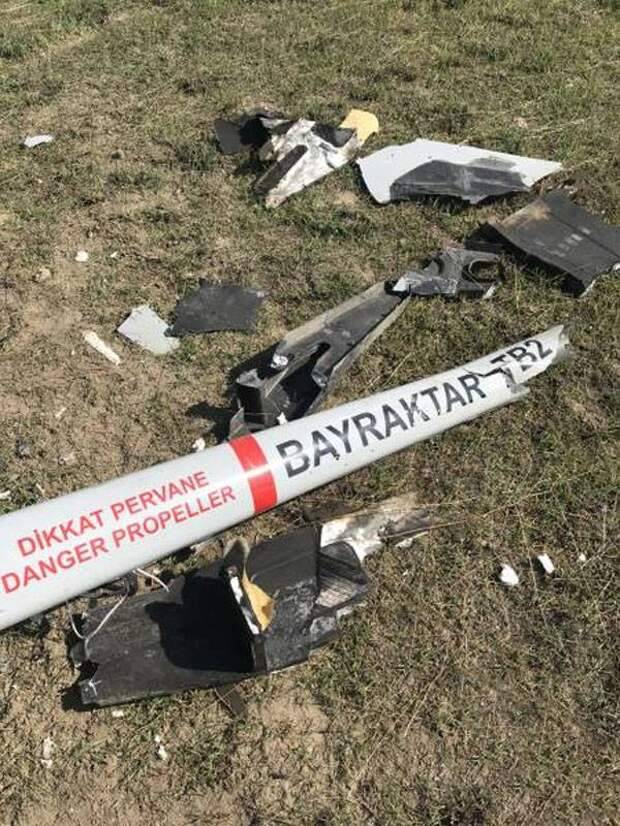
It’s also not worth writing off Pantsir-S1, the complex has been greatly improved precisely in terms of hitting low-flying low-speed targets following the results of its use in Syria.
It turns out in the end exactly what we have already said: "Bayraktar" is good for use only where there is no normal opposition. Yes, in Libya and Karabakh, he proved himself well, but in Libya, according to the LNA, 47 Bayraktars were shot down, the opinions of independent sources agree on the number 18. But the LNA had at its disposal the Pantsirs, which were leased to them by the Emirates.
There was really nothing to counteract in Karabakh, the old "Osa" and "Arrow" are not an adversary to a rather inconspicuous UAV. As soon as the Armenian army brought Torahs into Karabakh, the Azerbaijani army began to lose Bayraktars.
The use of "Bayraktars" by the Ukrainian army became an illustration of exactly what was said above. The short range of TV2 does not allow strikes at the rear, there are many weapons on the front line that can hit the drone.
Yes, the defeats of Russian equipment were captured on video, but after watching several videos that claim to be authentic, I would like to note the exceptional episodic use of Bayraktars, and mainly for single targets. Pretty reasonable, but not efficient.
In addition, in the conditions of modern opposition, Bayraktar in a special operation in Ukraine actually becomes a kamikaze drone, with no chance of returning.
The Russian Ministry of Defense announced the destruction of 35 of the 36 TV2 that Ukraine had. Various sources give numbers from 21 to 26 shot down drones, but "Bayraktars" will still be used in Ukraine, since they continue to be both imported and assembled on the territory of Ukraine from components.
But as a result, it remains only to note that "Bayraktar" is not a means of combat influence on the enemy when it comes to the Russian army. Here, the Ukrainians made a clear miscalculation, the shock UAV is an assistant, but not a means of replacing aviation.
Javelin
In general, "Jav" quite claims to be the most touted anti-tank missile system in the world. As expected, in general, the product of the American military-industrial complex. All the best is there.
Of course, the complex, if you look at the TTX numbers, then the "Jav" is simply beautiful. But here I have one single “harmful” question: if the complex is so good, why are so few people buying it ... in the USA?
The situation is generally superb: by selling the Javelin to everyone who can (and who cannot) pay, the United States for some reason limits itself. In 2020, the US Army purchased 672 missiles, in 2021 - 763 pieces. At 7100 declared launchers - a drop. Simulators are simulators, but combat shooting is the basis of everything.
Everyone knows the answer, and it is one of the answers to the question about the shortcomings.
1. Insane cost per shot. It is no longer a secret that often the targets for which the Javelin is launched are cheaper than ATGMs. On the "black" arms markets in Africa and the Middle East, a T-55 tank in a state of "on the move" and with ammunition can cost 100-120 thousand dollars. And the T-72A will cost from 150 to 200 thousand.
Today, one launch block for the US Army costs about 200 thousand dollars, the cost of a rocket ranges from 172-178 thousand dollars.
In general, if you missed, it is better not to think about the consequences. And if used in hostilities, then really, only if you get it for free, like Ukraine.
2. Calculation. For the normal (quick) movement of the entire Javelin farm, two, and preferably three, people are needed. And one of them must be a trained operator. Education is slow and very expensive. FGM-148 is not an RPG-7, you need to understand.
And you can easily lose the calculation with a trained operator. “Jav” unmasks itself well with a launch, and if the calculation immediately after the release of the rocket did not begin to rapidly leave the area, then everything can be written off.
Further follows from item 2. The launch range of the FGM-148 missile is only 2-2,5 km. That is, it is enough for the calculation to be detected visually and something unpleasant to be sent there. And yes, aiming, which takes a long time for the GOS to “remember” the target, must be carried out while in the line of sight of the target.
The war in Syria, by the way, confirmed that Javelin operators do not live long even in urban areas.
3. "Smart" but slow rocket. At a working range of 2,5 km, the rocket flies as much as 13 seconds. It's a lot. If the launch was noticed, then the tank crew has an eternity to “close”. Moreover, the most elementary smoke, since the optical guidance mode allows this. However, much has already been written about this.
GOS "fire and forget" is also not without flaws. Very often, the missiles did not keep the target in lockdown and missed due to the lack of contrast in the target's environment. And the operator after the launch no longer has the opportunity to retarget the rocket or correct its flight. That is, again 170 thousand into the void.
In general, in Ukraine, the Javelin, as expected, did not become a “wonder weapon”. Still, to control this ATGM, highly qualified and nerve-strength calculations are required. Judging by how many Javelins the LDNR fighters have already got, there are clearly problems with the second one.
In some places, FGM-148s were used and caused damage to Russian equipment, but it cannot be said that this happened massively and everywhere. Where there were well-trained operators - yes, there is nothing to hide. And where the Javas just went to the masses ...
And of course, the fact that the Ukrainian military uses complexes for which not a single hryvnia was paid makes their life much easier. True, it does not help as much as we would like.
"Stinger"
Perhaps the most controversial member of our hit parade. The oldest in terms of age and even actually retired. However, no, and the Sting is still in service.
What can be said about the use of "Stinger" in Ukraine? Yes, MANPADS are used. Sometimes even successfully, at least more successfully than in Syria, where in the province of Idlib, where several dozen Stinger launches were carried out against Russian Su-24s. None of the missiles hit the target.
The Stinger, like its colleagues in the MANPADS workshop, is a weapon that is effective at low and extremely low altitudes both against aircraft and helicopters, and against UAVs. The complex, due to its small mass, allows you to carry / transport and use it in conditions where the use of conventional air defense systems becomes problematic: forest, mountains, urban development.
In its niche, MANPADS have practically no enemies. The short range at very high speed does not allow aircraft pilots time to respond. Moreover, if the launch of a MANPADS missile is carried out "at close range", which is 1-2 km by aviation standards, then even the automation of aircraft and helicopters may not have time for countermeasures.
Of course, for the Stinger, the ideal position is when the operator shoots sideways in pursuit from a distance of 1-1,5 km. The rocket flies for 2 seconds and the target has almost no chance if the head has locked the target.
The greater the distance, the greater the possibility of getting away from the rocket or knocking down its aiming at the engine heat spot, using the same heat traps, which are fired automatically.
Of course, if a laser guidance system is used for missiles, then any aircraft has sensors that warn of laser irradiation. In the case of a passive infrared seeker, everything is more complicated.
Again, the Stinger is good at close range and low altitude. Passport firing range announced from 200 to 4500 meters. That is, the height is not more than 2 km, but this is also quite high, because the operator needs to make optical contact with the target for guidance.
The main problem of MANPADS is the need for direct direct contact with the target to guide the missile seeker to the engine heat spot.
As for Ukraine, there was only a partial success of the Stinger, because at altitudes up to 1500 m, MANPADS are really good, but higher up, it has less and less chances. Even if we take into account that the missile can fly more than the declared 4500 meters (the Stinger had cases of hitting targets at long distances), the target will have time to react and defend.
Given the infrared homing head, shooting off heat traps becomes the best countermeasure. However, it has long been a classic, like the Stinger itself. The only question is the time to react.
Why didn’t the Stinger in Ukraine become a “wonder weapon” that would literally wipe out all Russian aviation from the sky?
It's simple: mainly those types of aircraft that flew at low altitudes fell under the attack of MANPADS. That is, attack helicopters and attack aircraft. It is they who have to work in the range of heights that the Stinger shoots through.
But the main blows during the special operation were delivered by Su-34 bombers with high-precision weapons, allowing them to work from high altitudes, where the Stinger was not only ineffective, it simply could not climb there.
And the Su-25 attack aircraft, which flies at high speed over the area, is also not such an easy target.
***
The result of everything will only be a repetition of previously made conclusions: modern combat, modern operation, modern warfare does not allow victories with the help of some kind of “miracle weapon”. Not like that, with the exception of nuclear.
So no matter how good the Bayraktar is, it needs a clear sky, without enemy fighters and helicopters, without air defense systems, especially sharpened to search for and destroy small targets.
The Javelin is a very serious anti-tank weapon, but it needs trained operators and a minimal chance for them not to become a disposable suicide squad. And the enemy’s lack of means on the battlefield capable of detecting and destroying the calculation.
The Stinger is good in every way, but it works at very low altitudes. And it is practically impossible to complicate the life of enemy aviation if there is no medium and long-range air defense system.
Balance and saturation with various equipment capable of solving the widest possible range of tasks - this is the task that any army must solve for itself.
When there is no normal front-line aviation, the best attack drones will not solve the problem. And so it is in everything.
Unfortunately for the Armed Forces of Ukraine, Ukrainian specialists were able to understand and appreciate this too late. But by this time, three elephants, on which the victory of the Armed Forces of Ukraine over the Russian army rested, were crushed. And not by circumstances, but precisely by the detrimental state of the Ukrainian army, which had practically nothing to oppose to the Russian army, except for the fanaticism of its fighters.

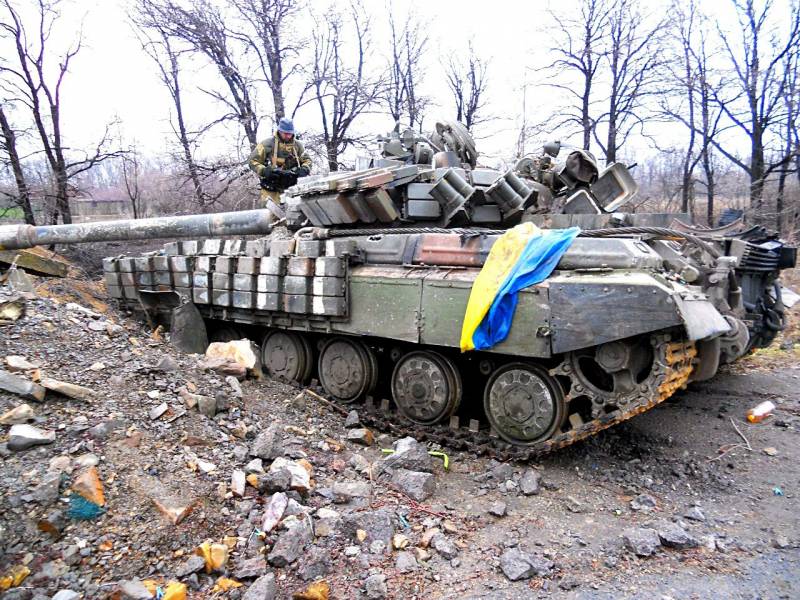
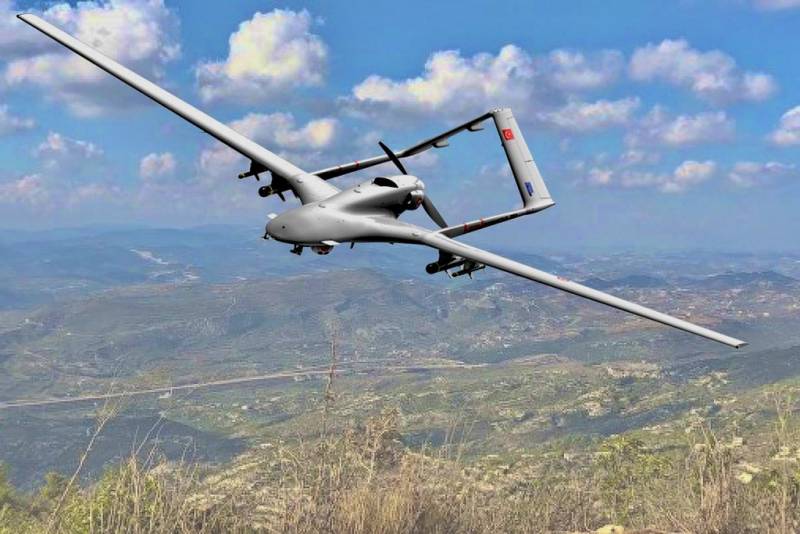
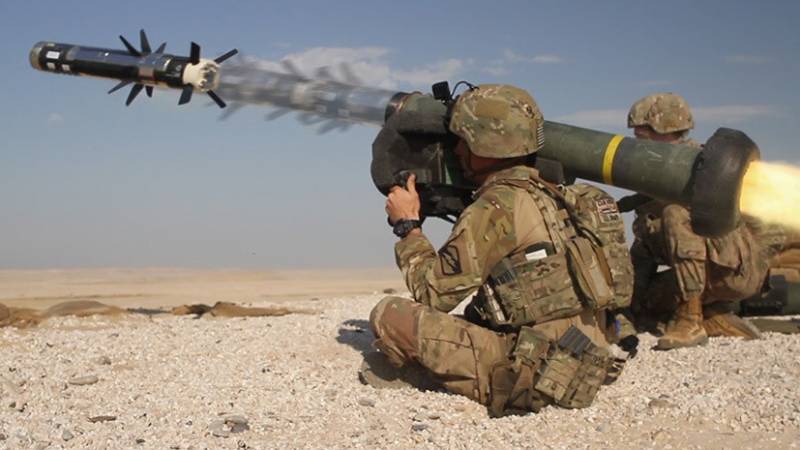
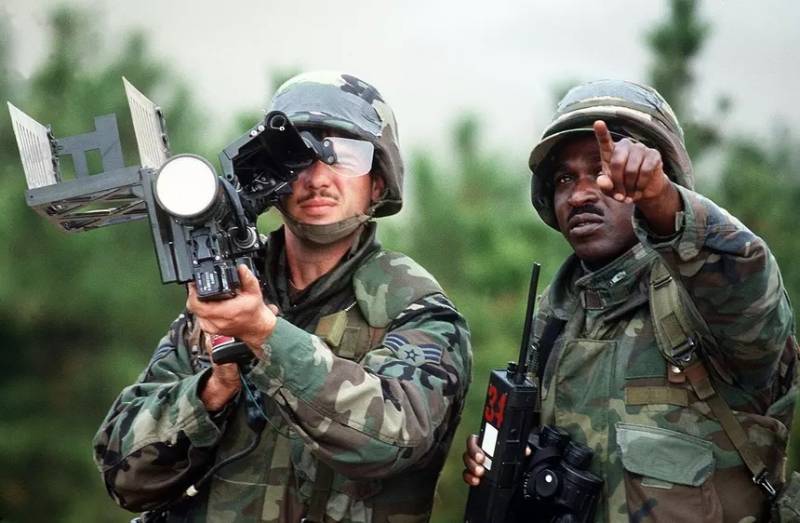
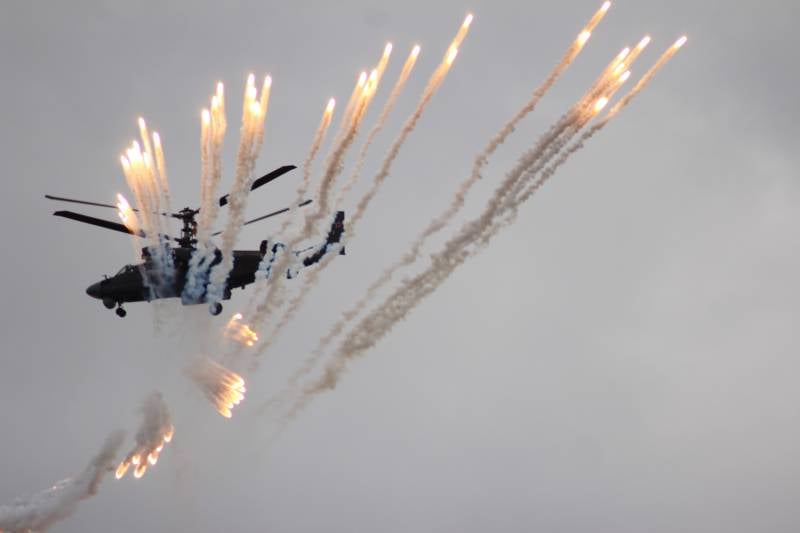
Information